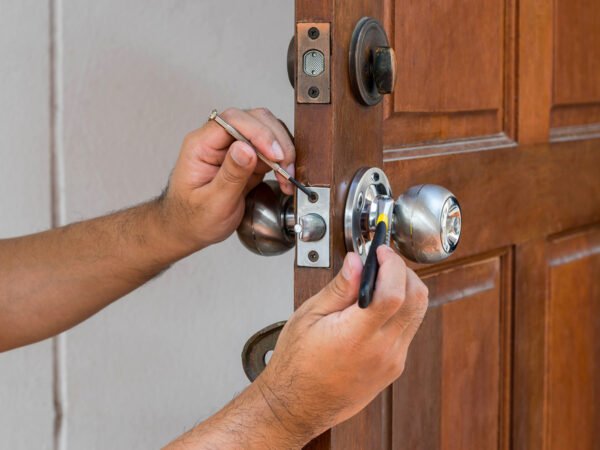Technology is constantly altering the face of all industrial sectors, including the food and beverage industry. One important technological change in this sector is the introduction of self-service kiosks.
If you are involved in the food business, you might have seen this new technology. If you are reading this blog, then you are looking for specific answers as to how it is better than traditional counter service.
To be honest, each of these options has its own pros and cons and works well with different types of food businesses. Here, we will break down the working process of kiosk screens and service counters so that you can decide which one suits you best and makes your operations more efficient.
You will also be able to decide if you want to work with a specific service or want to mix both. So, let’s get started.
What Are Self-Service Food Kiosks?
Self-service food kiosks let customers place their orders without talking to a staff member. Customers can browse the menu, select food items, and customize their orders on these kiosk screens. You’ve probably seen them in fast-food restaurants, coffee shops, and casual dining spots.
How Do These Kiosk Screens Work?
Self-service kiosks are connected to the restaurant’s point-of-sale (POS) system, which manages orders and payments. The kiosk screen shows a digital menu that can be customized to fit the business’s needs.
Once the customer places their order, they can pay directly through the kiosk, and the order is sent straight to the kitchen.
This keeps the ordering process smooth and efficient for customers and the business.
What Is Traditional Counter Service?
Traditional counter service involves customers going to the counter and talking to a staff member to place their order. This method is common in full-service restaurants, bakeries, and small cafes, where personal interaction is a key part of the customer experience.
How Does Traditional Counter Service Work?
With traditional counter service, face-to-face interaction allows for clear communication. Customers can ask questions, make special requests, or customize their orders. The personal touch also allows staff to suggest additional items or upgrades, which can help boost sales.
This type of service underlines human connection and personalized attention for each customer.
Pros and Cons of Self-Service Food Kiosks
Advantages of Self-Service Kiosks
- Speed and Efficiency: Self-service kiosks allow customers to browse the menu and place orders at their own pace using the self-service kiosk, helping reduce long lines, especially during busy times.
- Order Accuracy: With clear options displayed on the kiosk screen, there are fewer mistakes when placing orders. Customers can review their selections, which ensures they get exactly what they want.
- Labour Cost Savings: Since customers order through the kiosk, fewer employees are needed to handle orders and payments. This lets your staff focus on other essential tasks, like food preparation or customer service.
- Increased Order Value: Self-service kiosks can display upselling prompts, encouraging customers to add extra drinks or desserts to their orders. This can lead to higher overall sales.
Disadvantages of Self-Service Kiosks
- Initial Cost: Installing and maintaining self-service kiosks can be expensive. This initial investment might be a challenge for smaller businesses.
- Lack of Personalisation: Since customers aren’t interacting with staff, the experience can feel less personal. Some customers may miss the human connection that comes with traditional service.
- Technology Issues: Occasionally, kiosks can experience technical problems like system crashes or glitches. Some customers may also find it complex or confusing to use the kiosk, which can slow down the ordering process.
Pros and Cons of Traditional Counter Service
Advantages of Traditional Counter Service
- Personal Interaction: With traditional counter service, customers engage with staff face-to-face. This creates a more welcoming and personalized experience, as staff can greet customers, answer questions, and provide recommendations based on their preferences.
- Flexibility: Staff can easily handle special requests or customizations on the spot. Whether modifying an order or accommodating dietary needs, the human touch provides flexibility that self-service kiosks may not offer.
- Adaptability for All Audiences: Traditional counter service works for everyone, including customers who may need to be more comfortable using technology like self-service kiosks. It’s a more inclusive option that caters to all age groups and tech skill levels.
Disadvantages of Traditional Counter Service
- Slower Process: Since staff have to take each order individually, the process can be slower, especially during busy times. Customers may experience longer wait times.
- Higher Labour Costs: Traditional counter service requires more employees to manage orders, payments, and customer service. This can increase labor costs compared to self-service kiosks, which need fewer staff members.
- Order Errors: Human errors can occur when staff take orders, leading to mistakes or misunderstandings, resulting in customers receiving the wrong items or not getting exactly what they ordered.
The Future of Food Service: Why Not Both?
Some businesses find that they don’t need to choose between self-service kiosks and traditional counter service—they can have both.
With a hybrid model, food establishments can offer customers the flexibility to order through a self-service kiosk or interact with staff at the counter.
This allows customers to pick the most comfortable option, which can improve their overall experience.
Using self-service kiosks in a hybrid model helps speed up service for customers who want a quick and efficient ordering process. In contrast, traditional counter service remains available for customers who prefer a more personal touch.
Final Words
In the end, self-service kiosks and traditional counter service have unique benefits. A kiosk screen can be a great solution to boost efficiency and reduce wait times.
On the other hand, if your customers value personal interaction, traditional counter service might be the better fit. Some businesses may combine both options to offer flexibility and cater to different customer preferences.
Regardless of your chosen approach, it can help improve your food business and customer experience.
Also read interesting articles at Disboard.co.uk













